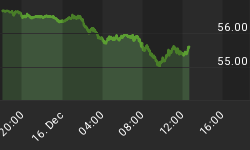Hot Off The Press
On July 16, in a review of investor sentiment, we noted the importance of keeping an eye on this week's American Association of Individual Investors (AAII) Sentiment Survey. Last week's decline in the S&P 500 and this week's concern over a 2015 rate increase by the Federal Reserve, has resulted in a rational decrease in bullish sentiment and an increase in bearish sentiment. The image below is a screen shot from AAII's website:

Sentiment Is Not At Extreme Levels
If you are new to sentiment, the basic theory is as follows...if we see excessive bullishness, it means most investors are probably close to fully invested. Conversely, if we see excessive bearishness, then most people have probably sold already. If everyone has bought, then buying power becomes weak. If everyone has sold, then selling pressure drops. Thus, theoretically, sentiment can be helpful when it reaches extreme levels since the probability of a market reversal is higher.
Bullish sentiment is currently below average (32.4% vs. 39.0%). Similarly, bearish sentiment is hovering around average, not extreme levels. Therefore, in theory, sentiment is not particularly helpful at the present time. Sentiment is certainly not at extreme levels that would suggest an imminent major peak in stocks. A correction is the more likely outcome if markets become weak.
Investment Implications - Wait For Evidence To Turn
The following tweet contains arguably the most important concept in investing and risk management:

The concept above applies to the present day market. Does the tweet contain useful information? We think so and others have agreed by voting our firm "most helpful" on Twitter. In terms of how to deal with recent volatility in the stock market, note in the tweet is says nothing about forecasting. Over the next few weeks, if we pay attention meticulously and make adjustments as needed, our allocation between stocks (SPY) and conservative assets, such as bonds (TLT) will stay prudently aligned with the stock market's upside potential relative to the downside risks.
















